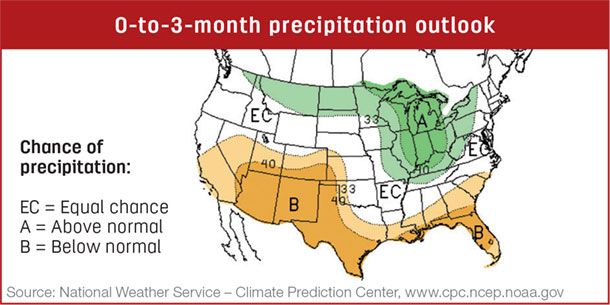Horse flies and deer flies can be a severe irritant but are an extreme challenge to control compared to the flies mentioned previously.
Horn flies and stable flies are biting flies that irritate cattle when taking blood meals. Horn flies remain on cattle throughout the day and are usually found on the top, shoulders and sides. Stable flies rest in shady areas and only spend time on cattle while feeding.
These flies are usually found on the legs and underline, which limits effectiveness of eartags, dust bags and back rubbers. House flies and heel flies are not biting flies but a source of annoyance. Heel flies are usually found on the lower legs, while house flies may be found anywhere food sources are present on the hair and skin.

Control measures attempt to suppress new generations of flies by either killing adult flies that lay eggs or preventing eggs from developing into adults. The former involves applying insecticides to the premises or the animal.
The latter focuses on cleaning around the premises to limit egg laying and larval development, introducing parasitic wasps, utilizing boluses or feed-through products to introduce growth regulators or larvacides into manure, or applying a systemic parasiticide to the animal to eliminate cattle grubs (the larval stage of the heel fly).
To address problems with house and stable flies, clean around the premises to remove breeding grounds (hay, spilled feed, manure, etc.), apply premise sprays and baits where adult flies rest, and introduce parasitic wasps to limit larval development.
A variety of products – insecticides, larvacides, larval growth regulators – and application methods – tags, sprays, dusts, rubs, boluses and feed-throughs - are available for horn fly control. Delay fly control until numbers reach about 200 horn flies per animal.
Alternate use of pyrethroids and organophosphates from year to year to prevent the buildup of resistant flies. Combine control methods (fly tags, dust bags, rubbers, etc.) to provide more complete coverage, but do not use different classes of insecticides in the different devices. Remove all control devices at the end of fly season. Begin using larvacides and growth regulators early to limit the development of adult flies.
Identify the pest(s) you are dealing with, select control methods most suitable for the situation, apply these in the most effective manner to provide control and avoid developing resistance in the fly population. ![]()

-
F.T. McCollum III
- Beef Cattle Production Specialist
- Texas A&M AgriLife Extension Service
- Email F.T. McCollum III







